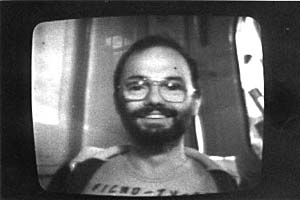
ATV on 438 MHz
Reception
The television set
The standard in amateur television
on 438 MHz is the standard used in hertzian broadcasting , thus
the receiver will be a commercial receiver , preferably Bi-standard PAL-SECAM (we are in
Europe) but amateurs use more and more PAL standard.
It is necessary to avoid the too sophisticated TV sets which pass on a blue screen when the signal weakens, they make very difficult the search of weak signals.
The converter
If the television set allows cable channels, it covers the amateur band, you have only to adjust it on 438,5.
That is enough to receive a local station.
To go further, a preamplifier is necessary the nearest possible to the antenna.
With a television set without cable channels, one needs a converter between the antenna and the receiver. The television set is generally tuned on channel 2 (picture 55,75 MHz, sound 49,25 MHz).
There were several descriptions of very good converters in the French amateur press, the F3YX is a reference (the first description in Radio REF April 1977); F1CWD produced some too.
The problem with the 438 in France lies in jammings caused by the other users of the band, even amateurs, nonconscious to the fact that we will lose this band if they push out the ATV of it.
The converter must thus be very well filtered, and sometimes cavities at the head strongly improve quality of the received picture.
Emission
The standard is amplitude modulation, with suppressed side band: if the carrier is on 438,5 the higher side band has to be eliminated above 440, it is very close, it needs cavities.
There is no sub carrier for the sound. Putting one 6,5 MHz from 438.5 and modulating it in AM (Secam) would put an AM carrier just in the DX zone of the 432MHz band.
There are many possibilities for transmitting:
1) Generate a low level modulated ATV signal at relatively low frequency (30 to 50 MHz), making it possible to reject more easily the unwanted side band, and convert it into 438 in a transverter and amplifying.
One needs very linear chains of amplification because the picture is quickly degraded by inter modulation and one finds at the end energy in the band we believed to be attenuated.
2) Build a 438 chain, either by successive multiplications of frequency, or, better now, by a VCO directly on 438,5 followed by a chain of amplification.
The final stage is modulated, one needs a powerful modulator allowing several megahertz of bandwidth, this method allows the best quality, the rejection cavities are placed after the modulated PA. This method was used in the first described transmitters by F3YX.
An alternative described by F5AD adopted this method by modulating a final stage using an hybrid module, that required much less means, color passed, but quality was worse.
3) Build a 438 chain,now directly by VCO, and modulate the stage preceding the PA, filter the unwanted sideband at this level, and amplifie in a very linear PA not to regenerate an unwanted side band by inter modulation.
This last method is used in the transmitter of the repeater F5ZEI .
Antenna
In television, the least decibel counts, one can receive television locally with one three elements, but the maximum must be done with the antenna if we want better results: 21 elements ATV, and if possible two in phase.
Don't be too full of hope however, in television it is better to live on a hill, because ATV contacts will be possible only if the contact in telephony is in the S9+ level.
Return to the welcome page
© 1999-2011 A. Ducros F5AD